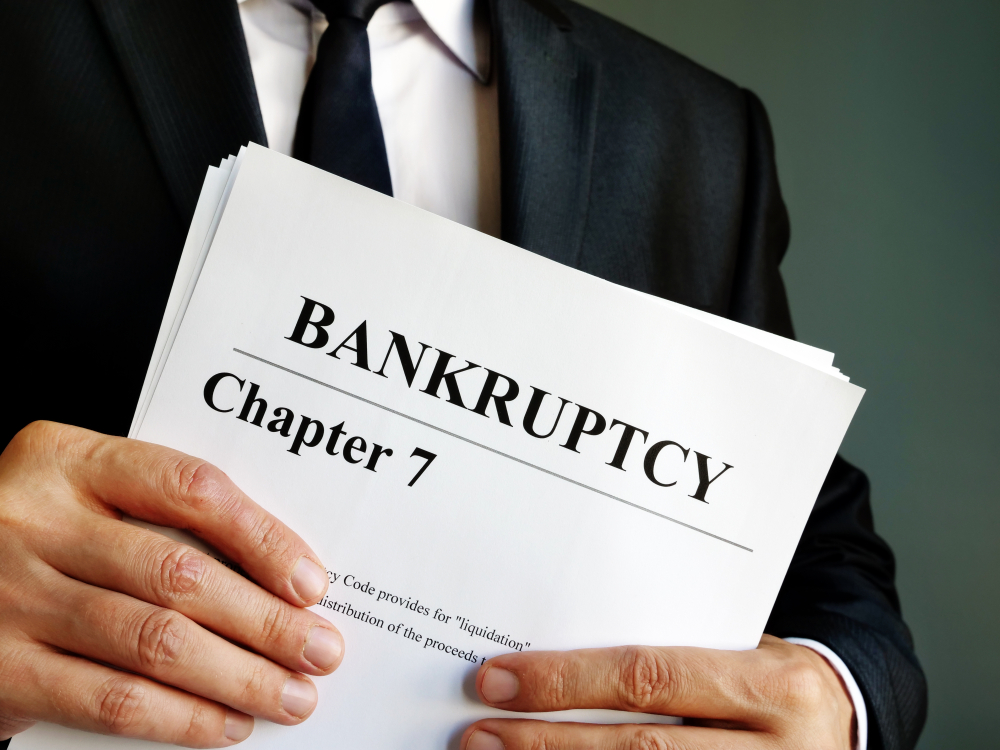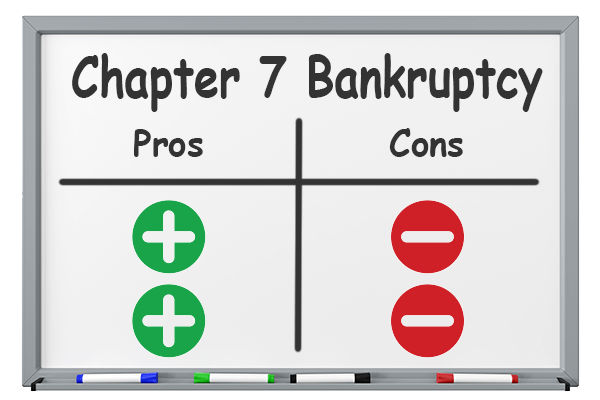Chapter 7 bankruptcy is a legal process that allows individuals or businesses to eliminate most of their debts by liquidating non-exempt assets. It provides a fresh financial start for those overwhelmed by debt, though it comes with serious consequences. This chapter covers the definition of Chapter 7 bankruptcy, the process of filing, the potential long-term impacts on credit and the advantages and disadvantages of Chapter 7 bankruptcy.
Understanding Chapter 7 Bankruptcy
What is Chapter 7 Bankruptcy? It is a legal process that allows individuals or businesses to eliminate most of their debts by liquidating non-exempt assets. It provides a fresh financial start for those overwhelmed by debt, though it comes with serious consequences. This chapter covers the definition of Chapter 7 bankruptcy, the process of filing, and the potential long-term impacts on credit and financial stability.
How Chapter 7 Bankruptcy Works
In Chapter 7 bankruptcy, the absolute priority rule determines the order in which debts must be paid. Debts are categorized, with each class having a specific priority for payment. Secured debts, such as mortgages, are backed by collateral to mitigate lending risks.
Unsecured priority debts, like taxes, child support, and personal injury claims against the debtor, are paid first. Secured debts are addressed next, including mortgages, which are particularly relevant in cases of mortgage insolvency in Toronto. Nonpriority unsecured debts, such as credit card balances, are paid only if funds remain after the liquidation process. If funds are insufficient to cover nonpriority unsecured debts, they are paid on a pro-rata basis.
The Bankruptcy Process
There is a strict process involved in bankruptcy, which is crucial for ensuring that debts are addressed fairly and efficiently. As part of our bankruptcy advisory service in Toronto, we guide you through this structured process, which provides protection for both the debtor and creditors. The bankruptcy process consists of the following four steps:

Step 1: Counseling and Forms
Before starting the Chapter 7 bankruptcy process, filers are required to complete credit counselling within six months of filing. This step is essential, as it helps individuals explore alternatives, including options like a consumer proposal to manage their debts more effectively. If there is no approved counselling agency in their district, this step may be waived, with other exceptions depending on individual circumstances.
To officially initiate Chapter 7 proceedings, the applicant must submit various forms, including a petition to the court. These forms outline personal financial details, such as assets, debts, income, expenses, and creditors. Once the petition is filed, an automatic stay takes effect, stopping creditors from pursuing collections and halting wage garnishments.
Step 2: Trustee Appointment and Meeting of Creditors
The bankruptcy court assigns an impartial trustee to manage the bankruptcy proceedings. The trustee evaluates the debtor’s assets to identify which can be liquidated to repay creditors. They also arrange meetings with creditors, where the debtor’s financial information and the petition are reviewed for accuracy. During this “meeting of creditors,” creditors have the opportunity to ask questions and discuss the debtor’s situation with both the trustee and the debtor.
Step 3: Debt Repayment
The bankruptcy trustee evaluates the debtor’s personal assets and financial situation. Any exempt property—items essential for maintaining a basic standard of living—remains with the debtor. Nonexempt assets, however, are taken and sold to repay creditors. Property exemptions differ by state, but often debtors can keep their main residence, personal belongings, and vehicle. The trustee manages the sale of any other nonexempt assets.
Step 4: Discharge of Remaining Debt
In a Chapter 7 bankruptcy, most debts are discharged, relieving the debtor of any personal responsibility for repayment. Once a debt is discharged, creditors can no longer pursue the debtor for future payment. However, certain obligations, such as alimony, child support, certain government debts, income taxes, and federal student loans, cannot be discharged in bankruptcy. The law imposes strict limitations on discharging debts related to income taxes and student loans. The United States Bankruptcy Code specifies 19 categories of debts that cannot be discharged.
Typically, filers receive their discharge about two months after the meeting with creditors.
Chapter 7 Bankruptcy Advantages and Disadvantages
Chapter 7 bankruptcy is a significant legal option for individuals and businesses facing overwhelming debt. Like all financial processes, it comes with both benefits and drawbacks that can greatly impact a debtor’s future. Understanding the complexities of Chapter 7 bankruptcy is essential for making informed decisions about one’s financial situation.

Advantages of Chapter 7 Bankruptcy
One of the main advantages of Chapter 7 bankruptcy is the ability to discharge most unsecured debts, including credit card balances, medical expenses, personal loans, and utility bills. This discharge releases the debtor from any legal responsibility to repay these obligations.
Filing for Chapter 7 bankruptcy also triggers an automatic stay, which immediately halts most collection activities by creditors, including wage garnishments, foreclosures, repossessions, and harassment from debt collectors. This stay provides crucial relief and stability, allowing the debtor to navigate the bankruptcy process without the stress of ongoing collection efforts.
While Chapter 7 requires the liquidation of non-exempt assets, debtors can retain certain exempt assets, which differ by state. These exemptions help ensure that debtors can maintain a basic standard of living after bankruptcy. Additionally, unlike Chapter 13 bankruptcy, which necessitates a repayment plan, Chapter 7 does not involve any such arrangement.
Disadvantages of Bankruptcy Chapter 7
However, filing for Chapter 7 bankruptcy comes with several disadvantages, starting with a significant negative impact on the debtor’s credit score. The bankruptcy will remain on the credit report for up to ten years, leading to a substantial initial drop in creditworthiness that can hinder the debtor’s ability to make major purchases, such as a home or vehicle.
Although debtors can retain their exempt assets, they may lose their non-exempt assets, which can include personal belongings and investments. Additionally, not all debts can be discharged under Chapter 7; obligations such as student loans, child support, alimony, and certain recent tax debts typically remain non-dischargeable.
Furthermore, Chapter 7 bankruptcy does not protect co-signers from creditors’ actions. If the debtor’s loan or debt has a co-signer, creditors can still pursue repayment from the co-signer even after the debtor’s obligation is discharged. Lastly, filing for Chapter 7 bankruptcy is a matter of public record.
Conclusion
Chapter 7 bankruptcy enables individuals and businesses to eliminate the majority of unsecured debts by liquidating non-exempt assets, with the process supervised by a court-appointed trustee. While debtors can keep their exempt assets, non-exempt assets are sold off to settle debts with creditors. For guidance through this process, bankruptcy counsellors in Toronto can provide valuable assistance.
FAQs
Eligibility for Chapter 7 bankruptcy primarily depends on passing a means test, which evaluates the debtor’s income, expenses, and family size to determine if they have enough disposable income to pay off their debts. Generally, individuals with income below their state’s median level qualify.
Filing for Chapter 7 bankruptcy requires several steps. First, you must complete credit counselling with an approved agency within 180 days before filing. Then, gather the necessary financial documents and submit a petition to the bankruptcy court. A trustee will be appointed to oversee your case, and you will be required to attend a meeting with creditors.
In Chapter 7 bankruptcy, debtors are allowed to keep certain exempt assets, which vary by state. These typically include essential items like clothing, household goods, work tools, and a portion of home equity. Some states also allow federal exemptions.





